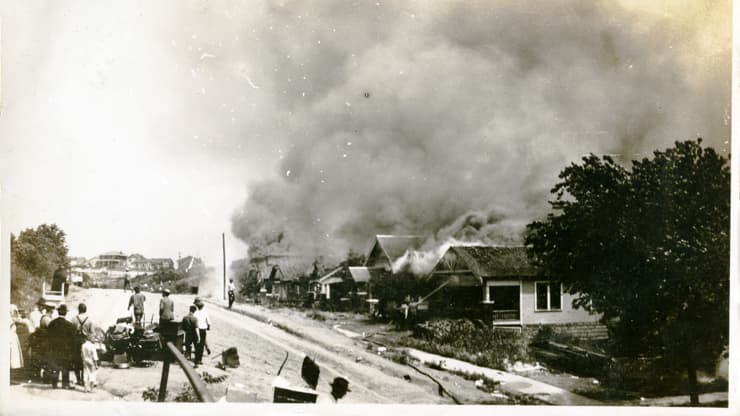Turn Black Wall Street Into a National Monument

While the U.S. does better than basically any country in the world in memorializing key sites of its racist past–quite a contrast to its contemporary politics–usually these sites happen through a combination of people very committed to getting a national park made out of their particular side and a sense of consensus in remembering the past where whites get on board for the tourist dollars if nothing else. Of all the race riots in American history, the one quite likely to become part of the National Park Service is the one in Springfield, Illinois in 1908. That’s not because it is more significant than others–in fact I had never heard of it before–but because of the local political circumstances surrounding the site today. That’s certainly fine–and it is politically important that this was in the North since northerners like to believe that racism is a southern problem.
However, there are lots of significant places that we should also remember. In terms of racist massacres, probably the single most important is that in Tulsa in 1921. But here, you don’t have local consensus. What you have is super angry and defensive racist whites who don’t want to talk about it.
The reconsideration of white culpability for 1921 has led to some heated exchanges. The Tulsa World received a huge backlash from readers in 2018 when it decided to change its description from “riot” to “massacre.” Black artists created a mural in Greenwood that crossed out the word “riot” and replaced it with “massacre.” The mural has been vandalized repeatedly. And then there’s the question of a new wave of money flowing in. There’s a shiny new loft structure facing the modest two-story red brick buildings of Black Wall Street. Change is everywhere. At one point, a software start-up company sat next to Wanda J’s soul food restaurant.
Cleo Harris watched a group of tourists come out of Wanda J’s and pose for selfies in the middle of the street. “Tourists ride scooters over plaques commemorating businesses burned down and never rebuilt,” he said. “They don’t realize this is hallowed ground.”
“Gentrification might do what violence couldn’t,” an African-American writer and activist named Nehemiah Frank told me. “White Tulsa could price us out of Black Wall Street. Then where would we go?”
So yeah, you aren’t going to get the white support here that these things often need to get across the finish line. But damn if it isn’t a great idea to commemorate it as a national monument.
President Joe Biden — who visited Tulsa to commemorate the 100th anniversary of the Tulsa Race Massacre — has the ability to do so by designating the Greenwood District a national monument through the Antiquities Act. In addition to the national monument designation, Congress is currently drafting a park study bill, designed to study the landscape of Black Wall Street and identify areas that could form part of a national monument. If Biden does nominate Black Wall Street for national monument status, such a study would make the path from presidential declaration to an actually existing monument quicker and smoother.
National monuments play a crucial role in telling the story of our country and ensure that important places and culture are preserved. Tulsa’s Greenwood district must become one of these remembered places — for what it represented and for the tremendous loss it and its people underwent. There are currently three known living survivors of this attack, aged from 101 years to 107 years old. They have clawed their way through the worst times in our nation’s history to arrive at this moment, and we owe them justice in their lifetime.
By not acknowledging and memorializing this complex story, we ignore the history of Black success in the U.S., along with the unjust and violent attempt to suppress it. We ignore how this massacre represents just one of many injustices against Black folks in this country and the ways that racism and discrimination persist in our history, culture and politics today.
It isn’t quite that easy as the president just creating it. The Antiquities Act only covers federal land. In cases where you don’t have preexisting federal land, such as at the Stonewall Bar in New York, you have to work out some kind of transfer. In that case, there’s a reason the memorial information is in the little park across the street. But of course people could sell their land to the feds. This is also why historical sites are often done as National Historic Sites and get passed by Congress to facilitate all of this. But with white Oklahoma highly unlikely to be supportive of any measure where they have to talk about the legacy of this massacre, I wouldn’t count on their crazy congresscritters to support any bill at all.
In any case, this is exactly the kind of thing we need to support. Historical memory is very important, as the Republican Party agenda of banning the teaching of anything like real history is demonstrating. This is one way to fight it.


